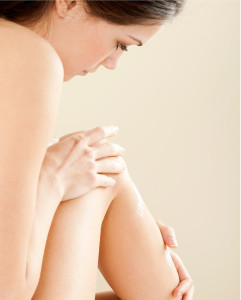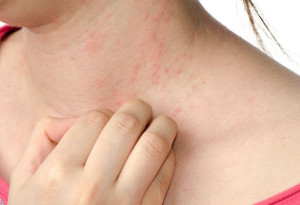 Many may know eczema is a skin disorder. However, most do not really know how it looks. So they may ask: what does eczema look like; and how can people tell if they have it or not?
Many may know eczema is a skin disorder. However, most do not really know how it looks. So they may ask: what does eczema look like; and how can people tell if they have it or not?
First of all, what exactly is eczema? Eczema is a common term for many different types of skin inflammation (also dermatitis). Atopic dermatitis is the most familiar type of eczema. There are other types of eczema, as well. It can affect all people of any age; however it typically is more common in infants. By age three, though, over one half of infants will no longer have the skin disorder. However, there are some people who will experience eczema throughout their lives. Sometimes, the individual with eczema will have a family history of eczema or other allergies.
As of yet, the cause of eczema has not been discovered; however, doctors believe that an irregular function of the immune system factors in the existence of eczema. Eczema can be triggered by different things; some forms of it will be provoked by substances which contact the skin, like cosmetics, clothing, soaps, detergents, jewelry, or even perspiration. Also, environmental allergens are thought to incite eczema outbreaks. Moreover, even changes in the temperature or humidity has caused outbreaks of eczema in some people. An often overlooked source of the outbreak of eczema is psychological stress.
Eczema will usually exhibit itself by dry and reddened itchy or burn-appearing skin. The majority of the time, continuous, annoying itching becomes the first symptom for many people. Eczema can lead to blisters and seeping lesions; or, instead, it can lead to painfully dry and scaly skin. Furthermore, if a person continues to scratch the eczema, the skin can become thickened and encrusted, not very pleasant in appearance. Moreover, any part of the body can be affected by the disorder; usually, in children and adults, the eczema will appear on the neck, face, on the insides of elbows, knees, and ankles. Also, eczema will show up on the forehead, cheeks, legs, forearms, neck, and scalp of infants. At times, the disorder will briefly crop up with reaction symptoms that appear only a few hours or days; at other times, the reaction will have symptoms that last for a longer period of time. In this case, the eczema is referred to as chronic (constant) dermatitis.
 Knowing more about eczema, a person will know if they have any skin anomalies that appear like eczema; and, they will certainly know if itching or oozing lesions are present. However, the safest and most reasonable way to discover whether or not he or she has it is to make a trip to the doctor. With a physical exam and close attention to the appearance of the skin, the doctor will have more of an idea than the patient. Also, since allergies normally afflict people with eczema, the doctor may test the patient for allergy to decide any possible allergy triggers. Children will also be tested for allergies.
Knowing more about eczema, a person will know if they have any skin anomalies that appear like eczema; and, they will certainly know if itching or oozing lesions are present. However, the safest and most reasonable way to discover whether or not he or she has it is to make a trip to the doctor. With a physical exam and close attention to the appearance of the skin, the doctor will have more of an idea than the patient. Also, since allergies normally afflict people with eczema, the doctor may test the patient for allergy to decide any possible allergy triggers. Children will also be tested for allergies.
Since the skin is itchy, the patient may continue scratching, causing an infection. Then, the doctor’s first goal is relief and cessation of the itching. An eczema treatment plan may include creams and lotions, cold compresses, over-the-counter products like hydrocortisone and antihistamines, corticosteroids, both topical and oral to reduce the inflammation. If the patient’s skin is infected, he or she may be given antibiotics to kill the bacteria. Other treatments for eczema involve using antihistamines, tar treatments, phototherapy (using ultraviolet light) and the drug cyclosporine.
The individual with eczema can also do the following to manage the disease: frequent moisturizing; avoid scratchy fabric, harsh soaps, sweating or overheating; too cold or hot, humid weather; and allergy triggers such as pollen and mold. In following the doctor’s orders and these treatment actions, the person’s eczema can be controlled.
